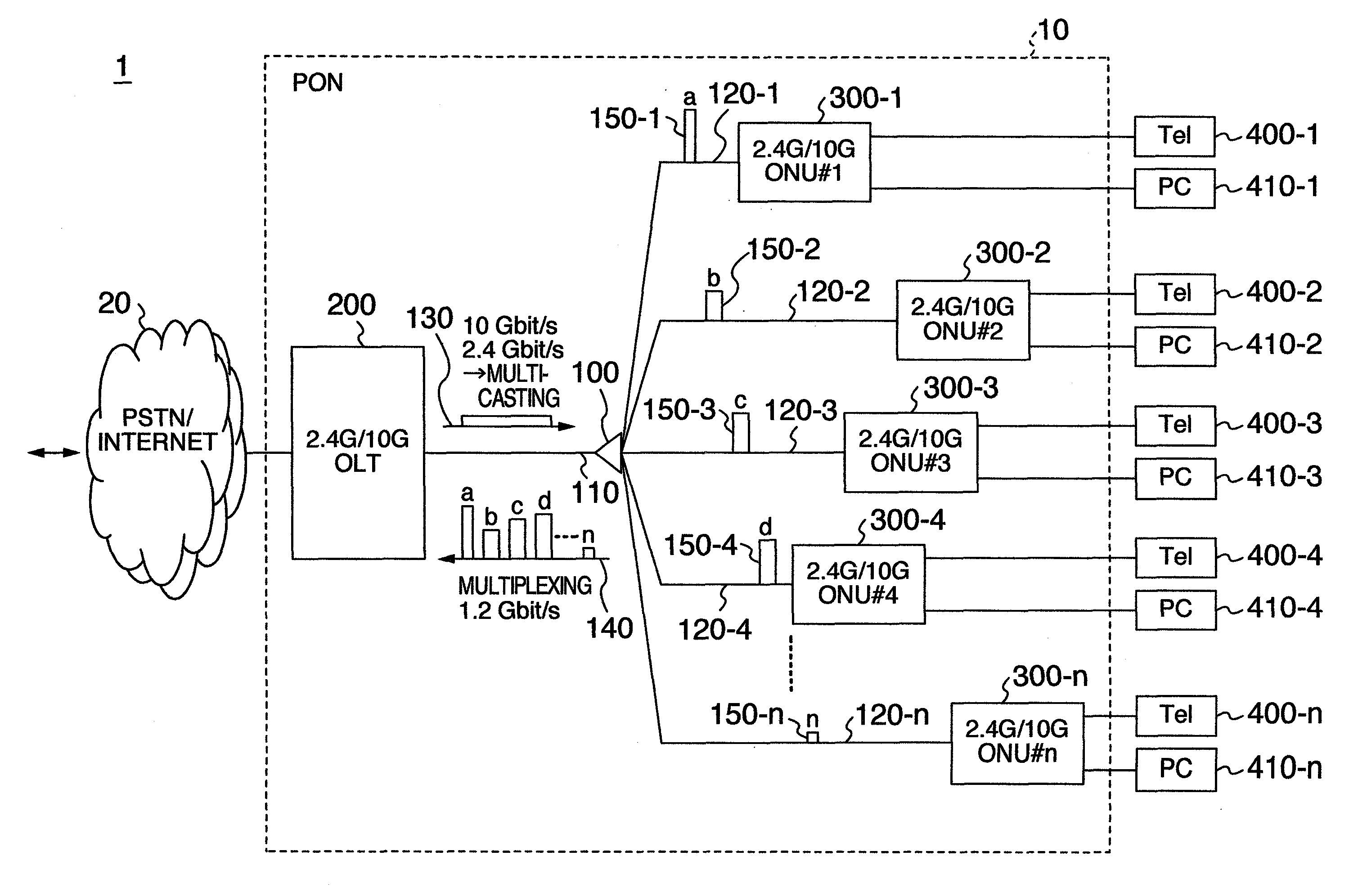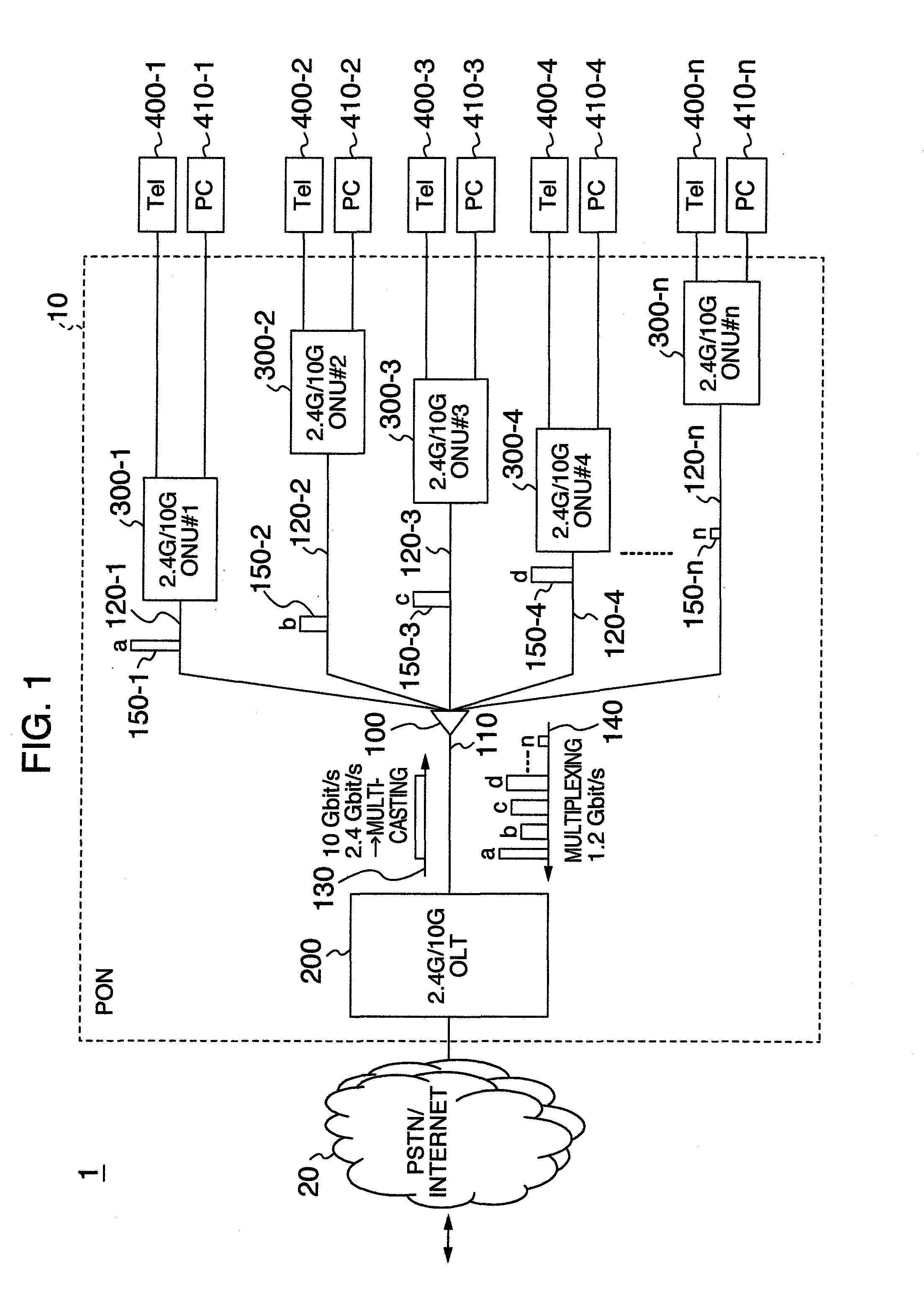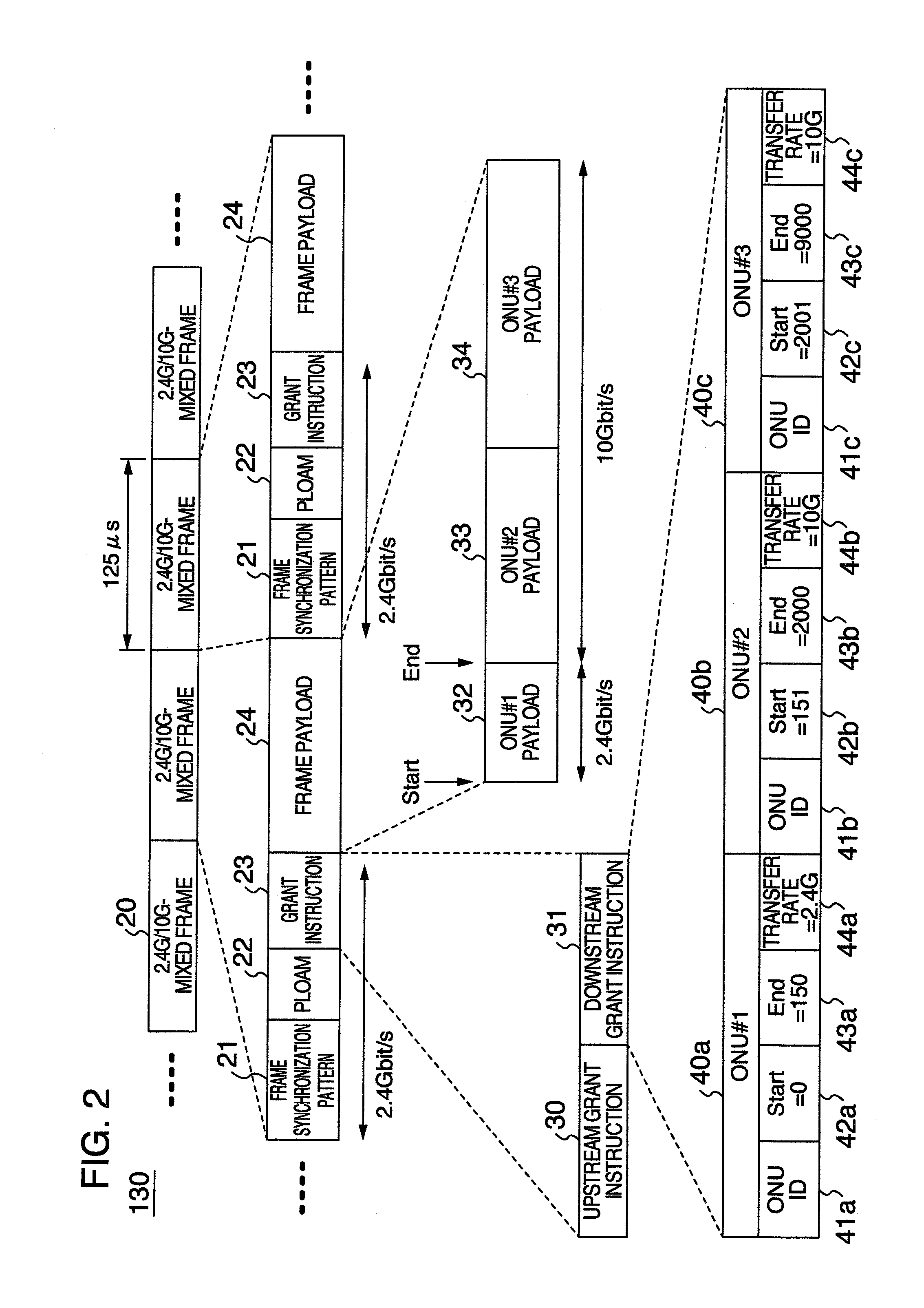Passive optical network system and operation method thereof
a network system and optical network technology, applied in the field of optical network systems, optical line terminals, optical network units, can solve the problems of cmos technology fabricated using power consumption of digital signal processing lsi, and power consumption of pon, so as to reduce the amount of power consumption
- Summary
- Abstract
- Description
- Claims
- Application Information
AI Technical Summary
Benefits of technology
Problems solved by technology
Method used
Image
Examples
Embodiment Construction
[0034]Hereinafter, referring to the drawings, the detailed explanation will be given below concerning the configuration and operation of a PON according to the present embodiment. At this time, the detailed explanation will be given selecting, as its example, the configuration and operation of a PON where the G-PON and the 10 G-PON are mixed. Here, the G-PON is defined by the ITU-T recommendation G. 984.3, and the 10 G-PON is a next-generation PON which is expected to be introduced in the near future, and whose transfer rate is raised.
[0035]In the following explanation, the PON is assumed whose configuration is that variable-length data is processed using the TDM scheme in much the same way as in the G-PON. Moreover, in this example, the transfer rate of downstream data from the OLT to each ONU is of the mixed configuration of 10 Gbit / s (which is equal to 9.95328 Gbit / s accurately, but, hereinafter, will be referred to as “10 Gbit / s”) and 2.4 Gbit / s (which is equal to 2.48832 Gbit / s...
PUM
 Login to View More
Login to View More Abstract
Description
Claims
Application Information
 Login to View More
Login to View More - R&D
- Intellectual Property
- Life Sciences
- Materials
- Tech Scout
- Unparalleled Data Quality
- Higher Quality Content
- 60% Fewer Hallucinations
Browse by: Latest US Patents, China's latest patents, Technical Efficacy Thesaurus, Application Domain, Technology Topic, Popular Technical Reports.
© 2025 PatSnap. All rights reserved.Legal|Privacy policy|Modern Slavery Act Transparency Statement|Sitemap|About US| Contact US: help@patsnap.com



